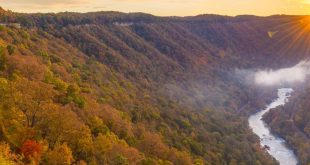Whether it’s rising sea levels, desertification, torrential monsoons, melting glaciers or ocean acidification, climate change is rapidly altering the landscape of our planet. We may be one of the last generations to see some of the Earth’s most cherished places.
Glacier National Park


A little more than 100 years ago, there were as many as 150 glaciers strewn throughout Glacier National Park. By 2005, only 27 remained, and those glaciers are expected to disappear by 2030, if not earlier. Many of the plant and animal species that call the park home require cold water, meaning the ecosystem of the park may change dramatically when the glaciers are gone.
Venice, Italy 

Venice has long been sinking, but rising sea levels have made the situation more dire. The frequency of floods increases each year, leaving many to wonder how much longer Venice can stay above water.
Great Barrier Reef 

It’s so large that it can be seen from space, but the Great Barrier Reef is disappearing at an increased rate because of climate change. Rising ocean temperatures, water pollution, ocean acidification and cyclones continually pummel the reef and have caused mass coral bleaching. What took 8,000 years for nature to create could disappear within our lifetimes.
Saharan Africa 

By some estimates, the Sahara in Africa is growing at a rate of 0.5 miles per month. The desert, already the largest in the world, could consume all of Northern Africa, altering the environment of a continent.
Maldives 

Maldives is the lowest-lying country in the world, with a maximum natural ground level of 2.3 meters (7 feet, 7 inches), and an average of only 1.5 meters (4 feet, 11 inches) above sea level. If sea levels rise too much, the country could earn an unwanted title: the first nation to be engulfed by the ocean because of global warming.
Patagonia 

A land of untouched beauty, South America’s Patagonia could be dramatically altered by climate change. Many of its glaciers are steadfastly retreating because of rising temperatures and declining precipitation. While this land won’t disappear entirely, its landscape may soon be altered beyond recognition if global warming persists.
Bangladesh 

Set in the low-lying Ganges–Brahmaputra River Delta, Bangladesh sits in a perfect storm of climactic conditions. About 50 percent of the area would be flooded if the sea level were to rise by 1 meter. Bangladesh also lies at the heart of the monsoon belt. Natural calamities, such as floods, tropical cyclones, tornadoes and tidal bores occur here almost every year — with tragic results.
Alaskan tundra 

Global warming heats up the Arctic twice as fast as the rest of the world, meaning Alaska’s beautiful northern tundra could vanish completely if temperatures continue to rise. As the tundra’s permafrost melts, it not only drastically alters the ecosystem but also releases additional carbon — ironically hastening global warming.
South Australia 
Much like the Sahara in Africa, desertification threatens South Australia. Across the region, fresh water supplies are rapidly drying up. Meanwhile, the parched landscape increases the occurrence of wildfires, threatening agriculture, wildlife and hundreds of Australian homes.
The Alps 

The European Alps sit at a lower altitude than the Rocky Mountains, and their glaciers and ski resorts are more susceptible to the effects of global warming. The famed glaciers are predicted to disappear by 2050.
 World inside pictures Collect and share the best ideas that make our life easier
World inside pictures Collect and share the best ideas that make our life easier







